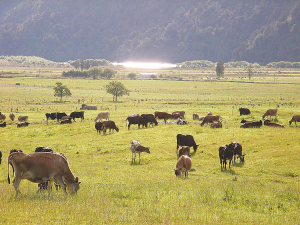Dairy farmers will be paying a higher TB differential slaughter levy from next month despite concerns raised by DairyNZ.
The new differential slaughter levy rates are: $11.50/head for dairy animals, up from $10.50/ head and $4.75/head for beef animals, changing from $5.50/head.
There will be no changes to the deer industry levy.
The levy is collected to support funding of the TBfree programme on behalf of beef and dairy industries. The funding shares change annually based on shifts in each industry’s relative size and value.
Ospri says each year the levy rates are reviewed under the TBfree Funders Agreement to ensure that the overall funding of the TBfree programme aligns with the agreed funding levels. Levies are adjusted to reflect the latest industry farm gate values and slaughter volumes for both dairy and beef stock.
It says while fully supportive of the TB Programme, DairyNZ expressed concerns the timing adds further pressure to farm businesses currently challenged by the reduced milk price.
In making its decision, the Ospri board acknowledged that all farmers are under financial pressure, but if the differential slaughter rates are not recalibrated now for the dairy levy, there would likely be a need to increase this rate by greater increments in the future.
“Any adjustments to the differential slaughter levy are communicated to DairyNZ, Beef + Lamb New Zealand, and Deer Industry New Zealand as the industry levy bodies in the TBfree Funders’ Agreement and are made in line with the annual funding level specified,” it says.
“Adjustments in differential levy rates do not provide an overall increase in the annual funding of the TBfree programme — but do ensure consistent funding to enable the programme to deliver.”
Levy Explained
A new TB slaughter levy has been in place since July 2016. From 1 October 2023, the new differential slaughter levy for dairy cattle will be $11.50 per head. The beef cattle levy remains at $4.75.
The TB differential slaughter levy is collected to support funding of the TBfree programme on behalf of beef and dairy industries, and the funding shares change annually based on shifts in the relative size and value of each industry.
How do I make sure I pay the correct rate?
The levy is managed by assigning the correct animal production types in the NAIT system. Account holders can assign their required production type, dairy or beef, which determines what levy is charged at the time of slaughter.
When farmers are tagging and registering their animals, they select the correct production type for their livestock in the NAIT system.
When purchasing animals, farmers need to make sure animal production types are correct after the movement onto their property is confirmed.
If an animal’s production type is dairy when it is sent to slaughter, the farmer will be charged the dairy levy for that animal.
If the production type of the animal is changed from dairy to beef – and stayed on a beef farm for more than 62 days – the farmer will be charged the beef levy. When buying animals on a regular basis, a livestock agent or information provider might help with updating the production types of animals.
For untagged animals, meat processors use the primary farm level (NAIT number) production type to determine what levy rate should be charged.
Key Tips
- Keep your NAIT account up to date. This includes recording movements on and off your property and reviewing animal production type for any livestock being consigned to slaughter.
- If finishing dairy animals as beef, the production type must always be updated in the NAIT system 62 days before sending to slaughter; otherwise the animals will be charged the dairy levy.
- For untagged animals, the meat processors will use the primary farm level (NAIT number) production type for charging the TB slaughter levy.
- For unregistered animals, the meat processors will use the tag level production type for charging the TB slaughter levy.


















